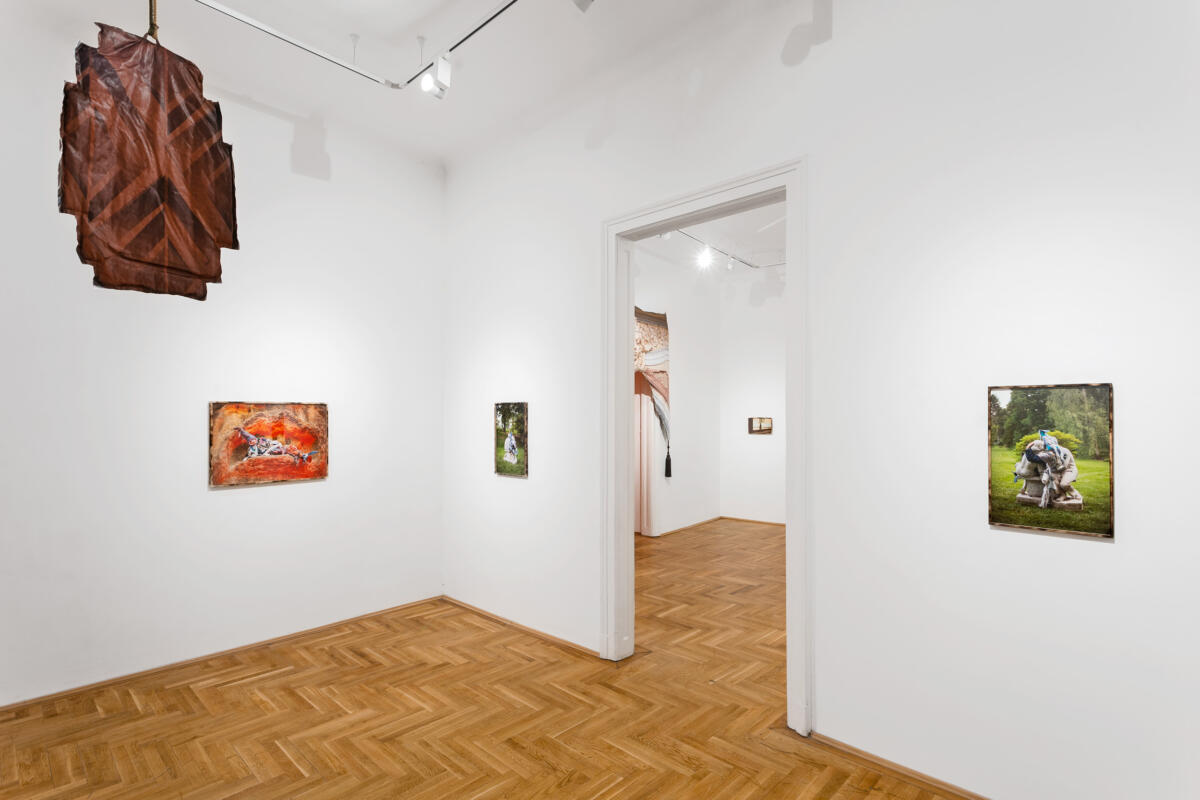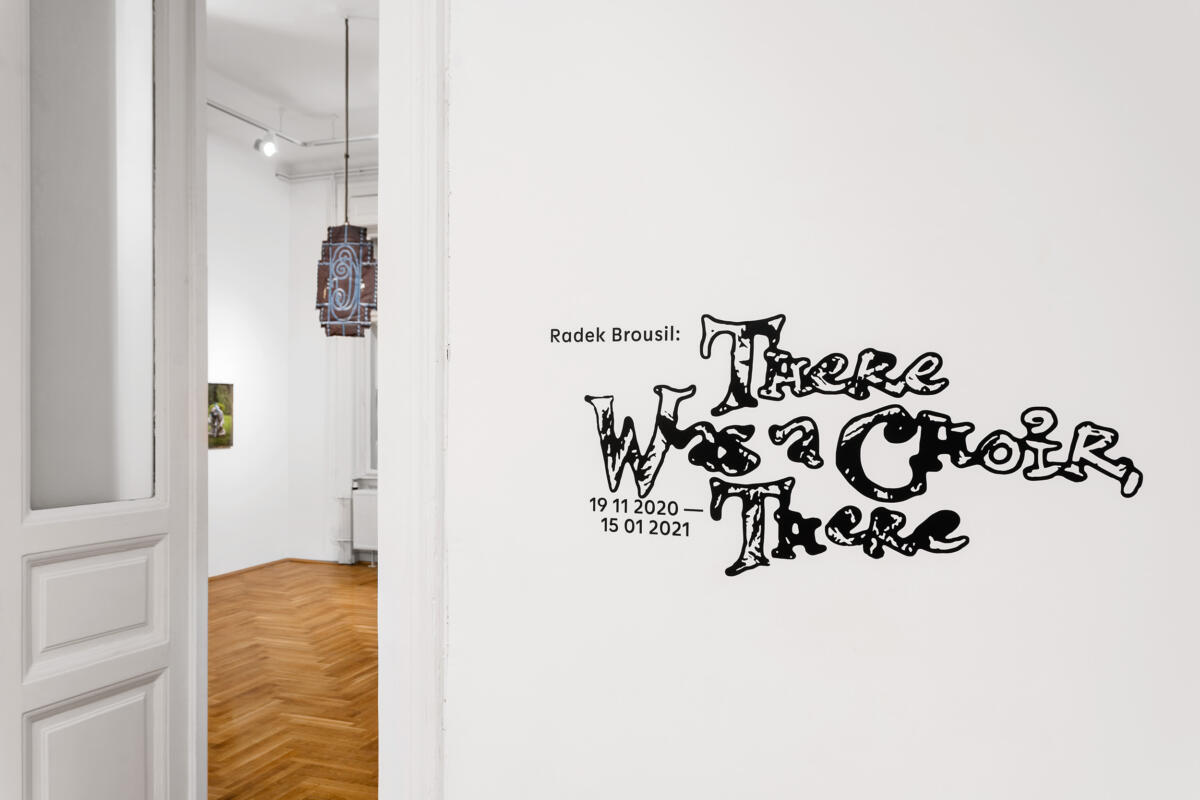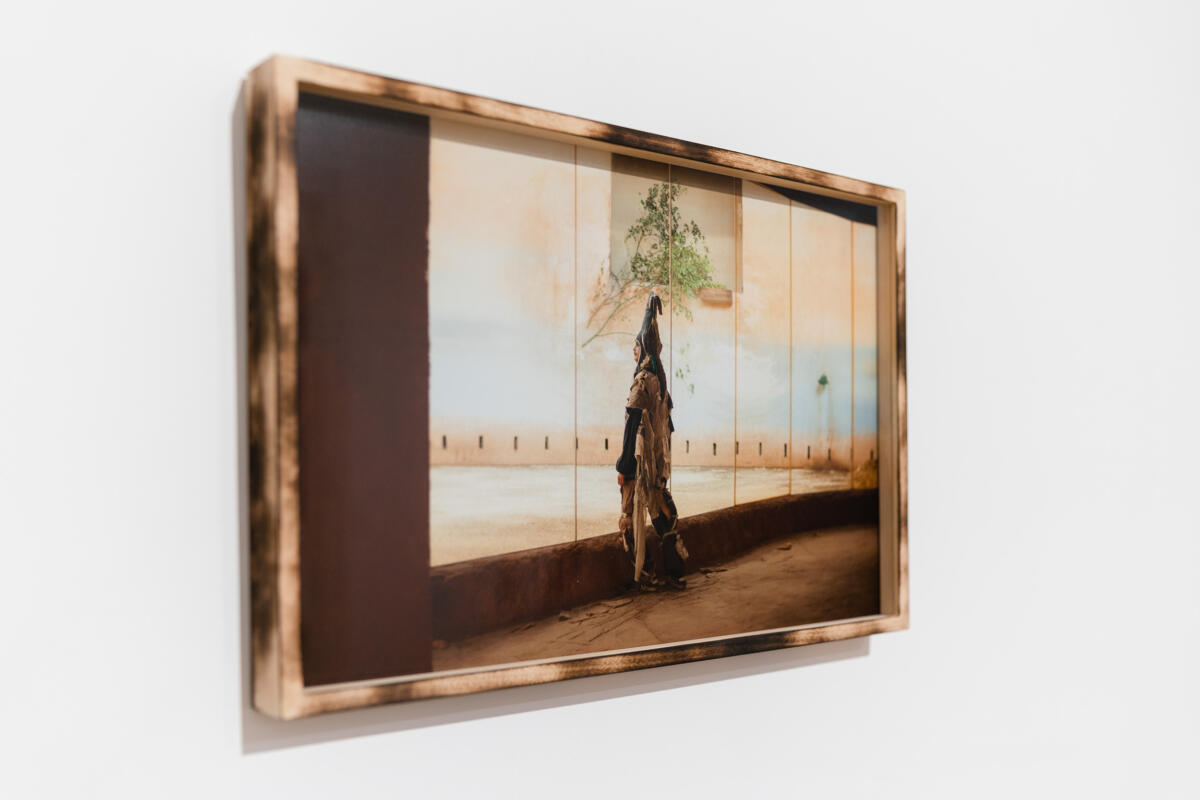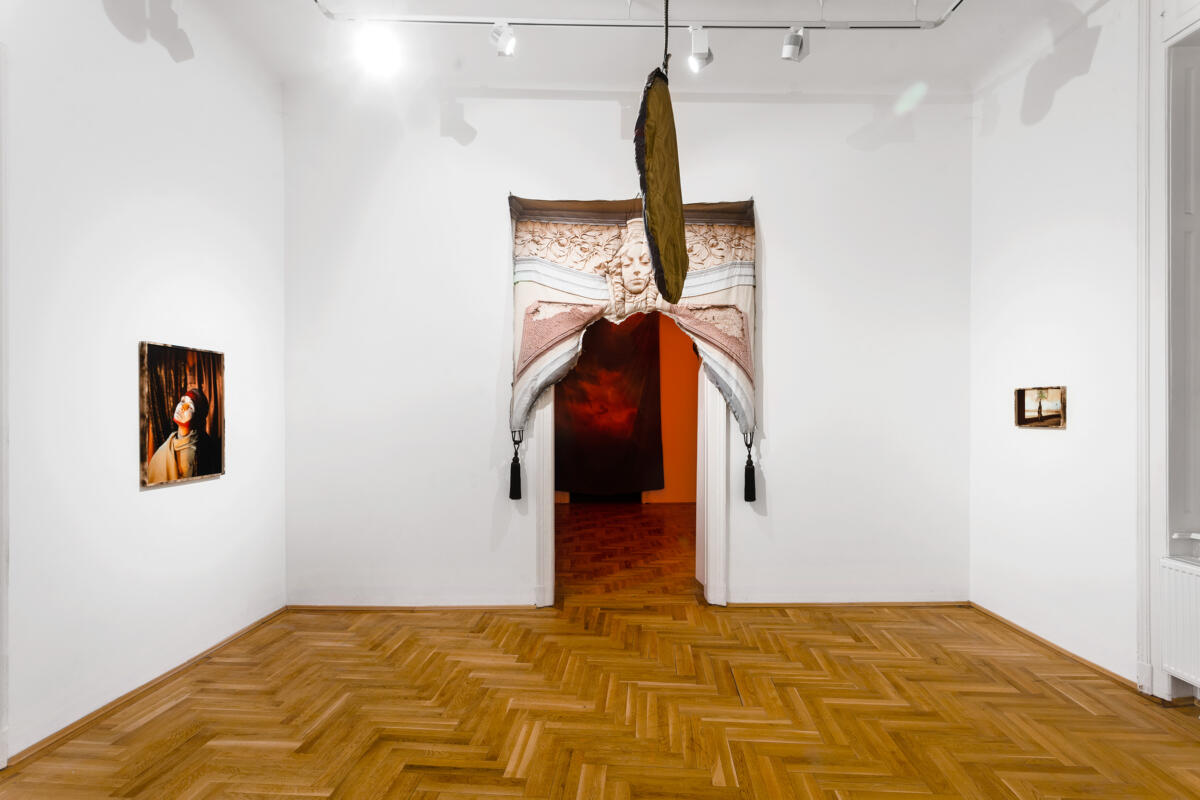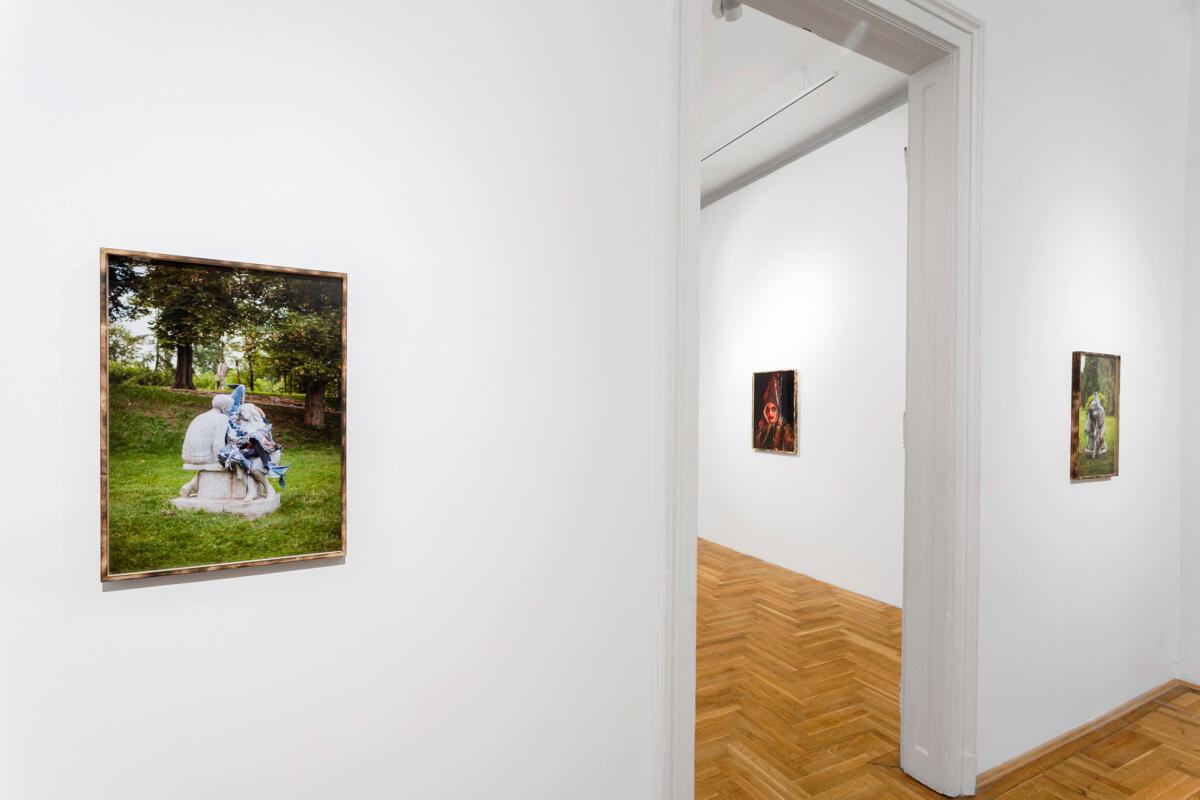[EN/HU] ‘There Was A Choir, There’ by Radek Brousil at Glassyard Gallery
![[EN/HU] ‘There Was A Choir, There’ by Radek Brousil at Glassyard Gallery](https://blokmagazine.com/wp-content/uploads/2021/01/dsc3855-1200x800.jpeg)
[EN]
I dont know if anything at all will be alright.
The main hero of Radek Brousil’s film is in a mental dialogue with a female hyperobject, discussing ’the end’, shame, guilt and the possibility of doing anything while wandering through the city and the country in a half-dead fish costume. Skateboarding, smoking cigarettes, wondering about “feeling the butterflies” in long, distancing shots, something like a reference to the melancholic romance of independent cult movies of the 90’s. The authenticity of intimate experience is, however, constantly alienated by the overall theatricality of the costumes, props, overplay, cut-ins and the ever-present shadows of a real catastrophe. The intentionally unresolved ambivalence of intimate and real-life drama can, therefore, be read as an appeal for resolution. Textile objects and staged film photographs further problematise the malleability of the seemingly contradictory linking of activism and escapism. A critical reading of Czech culture and history mingles with personal sentiment for the landscapes of our childhood.
The exhibition There Was a Choir, There is, therefore, a mutual bond of the personal and the general, ecological topics evolved in Brousil’s previous work, personal predispositions and memories. The bonding agents in this assemblage are often intentionally contradictory emotions.
The motif of the half-dead fish represented by the main male hero (the alter-ego to a certain extent) literally refers
to the trace of the amount of drugs splashed into the rivers from our sewer system. The costumes also resemble the animated character, the 3D video-rendered crying and heavily breathing plastic bottle and ceramics featured in Brousil’s earlier works (such as “Too Proud to Hope, Too Weak to Climb”, 2018), poetically referring to the meaninglessness and the catastrophic consequences of the bottled water economy. The entire film’s dialogues are put together as a collage from the lyrics of 90’s indie-emo bands. As they form part of his memories and identity, Brousil already used those band’s t-shirts to create the giant water drop in ”Too Proud to Hope, Too Weak to Climb” in 2018, or the embracing torsos in ”Standing, Holding a Waterlily” in 2019, and these bands also provide the musical background for many of his videos. Love, self-harm, suicide, pain and anxiety are in the script dialogues ambivalently thematized as an individual story and the common fate of the planet. In the only song of the film, Brousil himself sings “I’ll try, I’ll try, I’ll try” underlining the tension between the authentic feeling of the impossibility of an authentic position, anxiety and powerlessness.
The main characters’ make-up is an allusion to the clown-like make-up of Jiří Voskovec and Jan Werich, the 1920’s and 30’s creators of Prague’s avantgard Liberated Theatre, as well as to their own inspiration drawn from the Asian exoticism of their time. The tension between a concrete utopia and fairy tale present in the “poetism” approach of Liberated Theatre the tension between local context and global phenomena, further associated by the film’s locations. Whether it be the functionalist Church of the Czechoslovak Hussite Church in Farská street in Prague’s 7th district with its renowned stained glass cupola, or The Devil’s Heads, a pair of 9-metre-high rock sculptures near Kokořín made by the sculptor Václav Levý between 1841-1846, they are a direct reference to Czech Romanticism, folklore and the fairy-tales tradition the film intentionally enters. The 1990’s movies’ romantic skateboarding- melancholy is at the same time an authentic return to Brousil’s childhood, the stigma of growing up in Prague’s suburbs of prefabricated panel housing estates.
As in Brousil’s previous work, an omnipresent ambivalence stands behind the film series of serious statements and decisions. The film was shot as a zero waste film. The costumes were upcycled from fabric leftovers by the designer Mia Jadrná. Brousil has himself been working with textiles and sewing for a while. He used Czech-made fabrics with patterns intended for the African market for example in “Hey Sorrow, Where Are You?” in 2018. He uses textiles generally as photo print material and sewing as a relation to his own positions to photography and his position as a male photographer. The pillow-like objects in the gallery are consequently shifting the subject matter of hard architectural elements, often stucco relief of faces – mascarons, to another level of intimacy and emotions: softness and hugging. His past and present as an artistic, as well as a commercial photographer is also reflected in the series of staged film photographs hanging on the wall in custom frames.
There Was a Choir, There is like a kind of alter-ego, an image of a mind but also the effort to capture the general and the individual, the generational and the social feeling of authentic alienation.
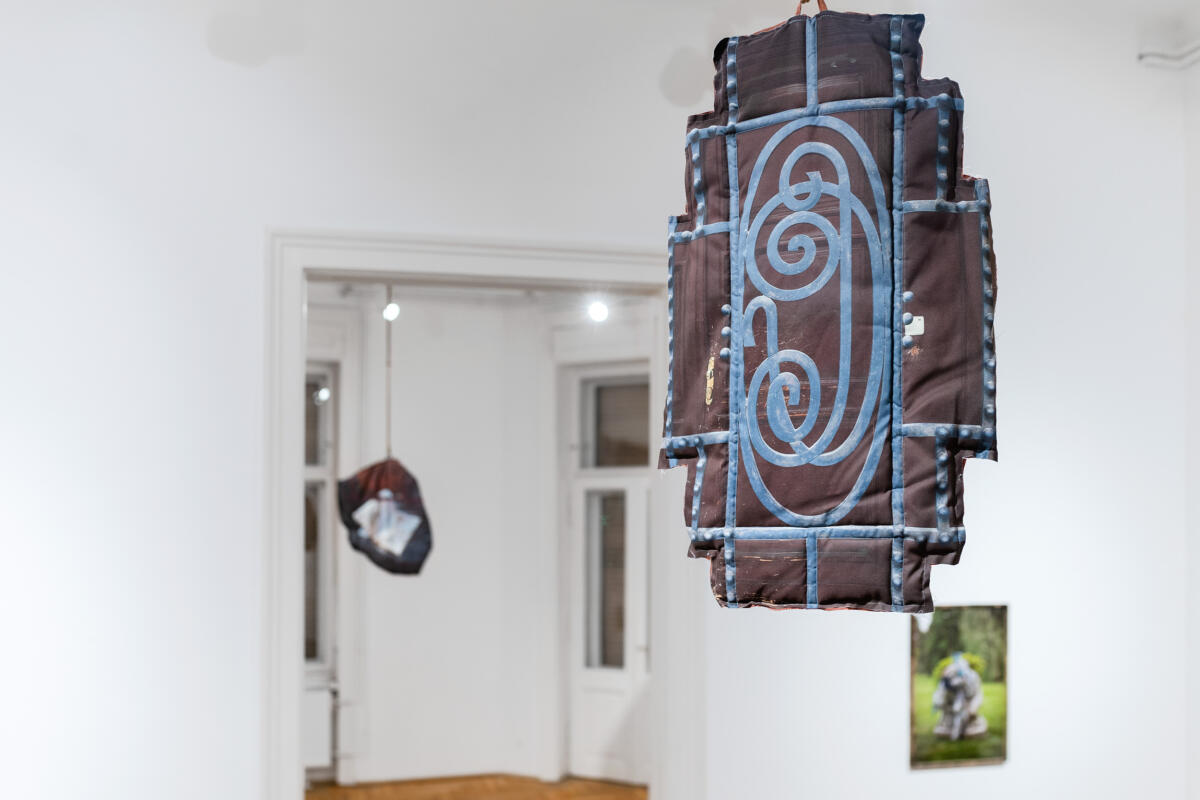
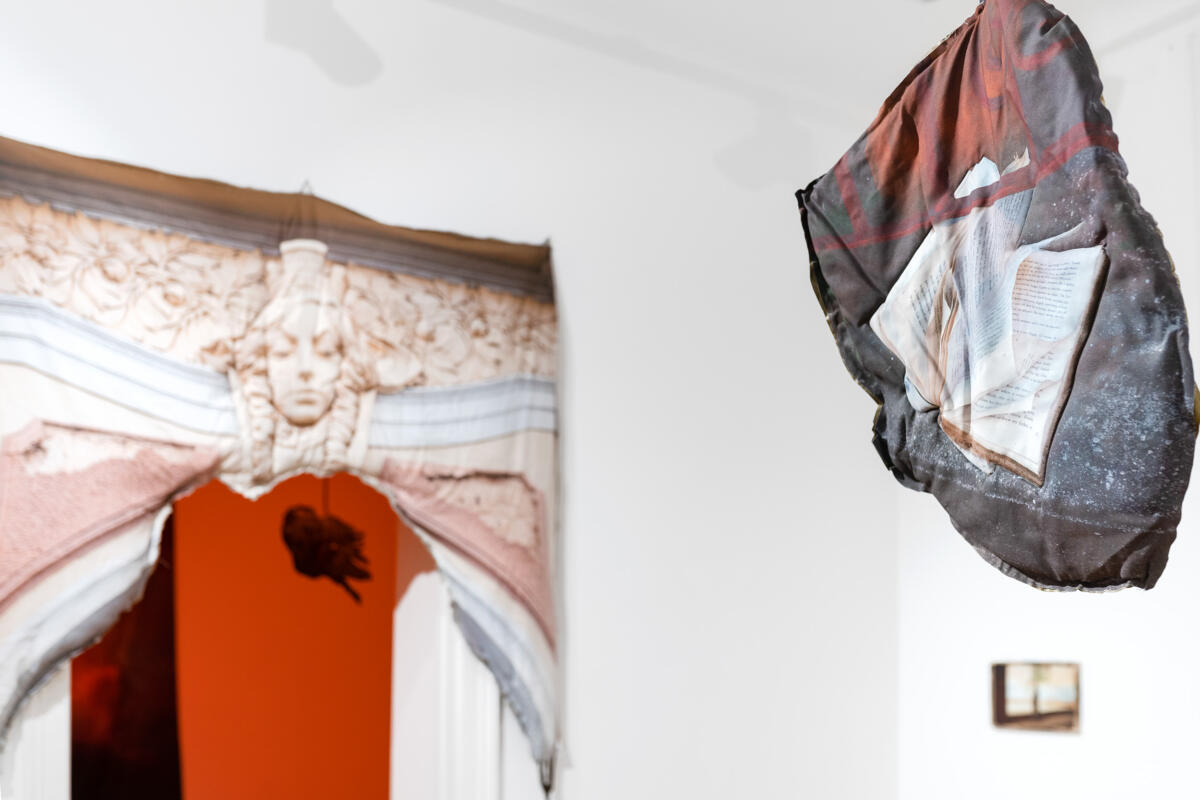
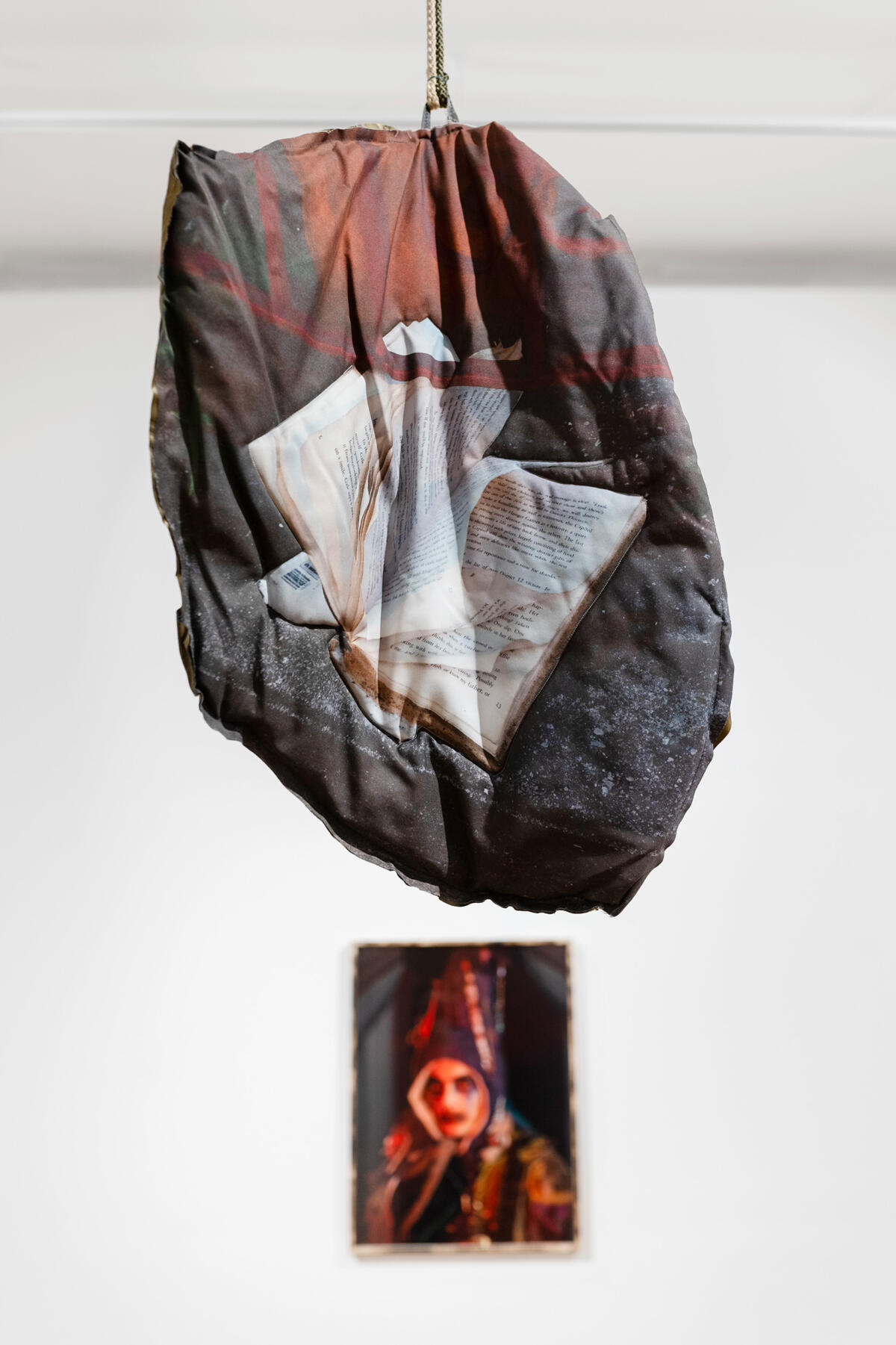
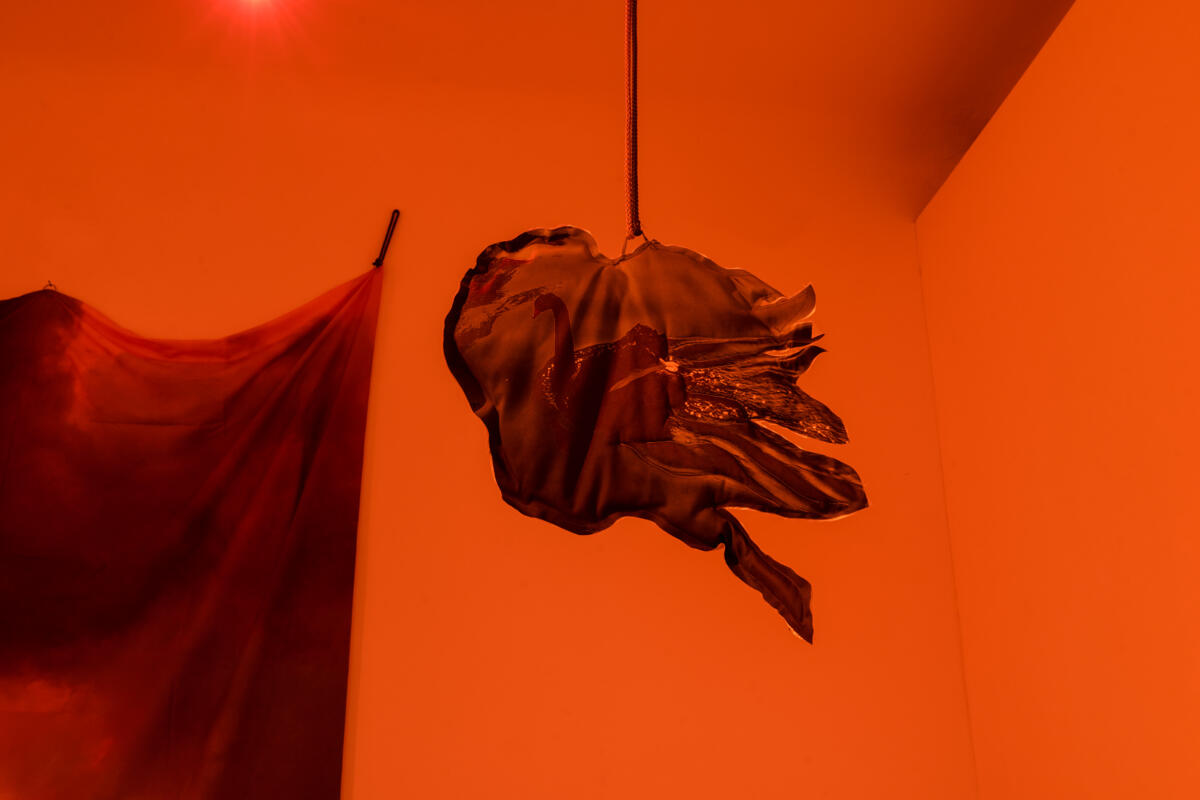
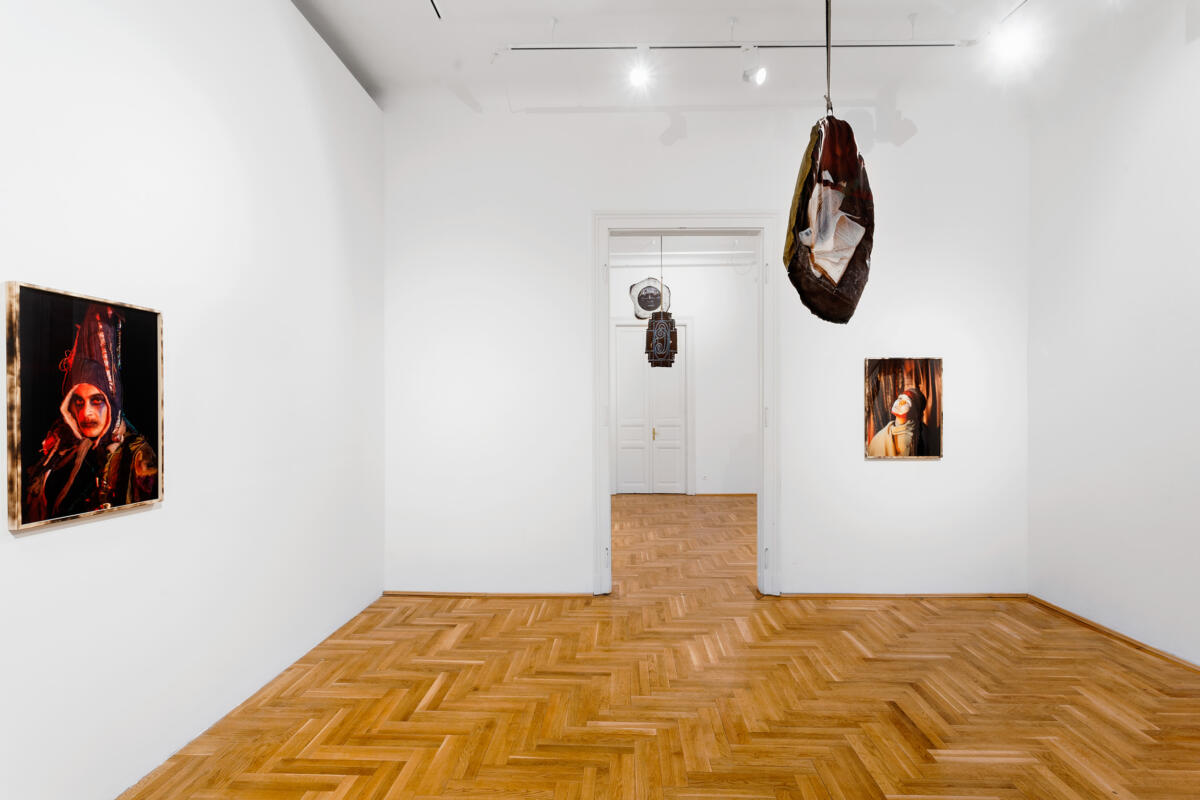
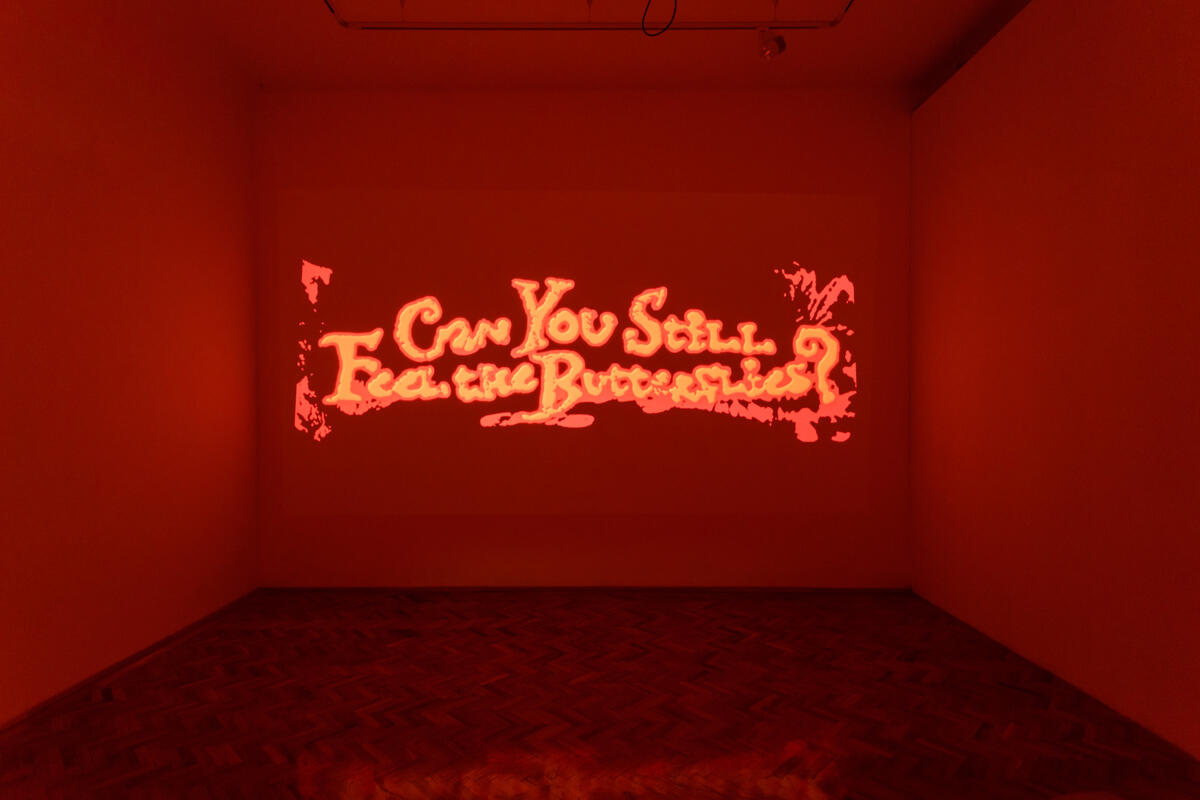
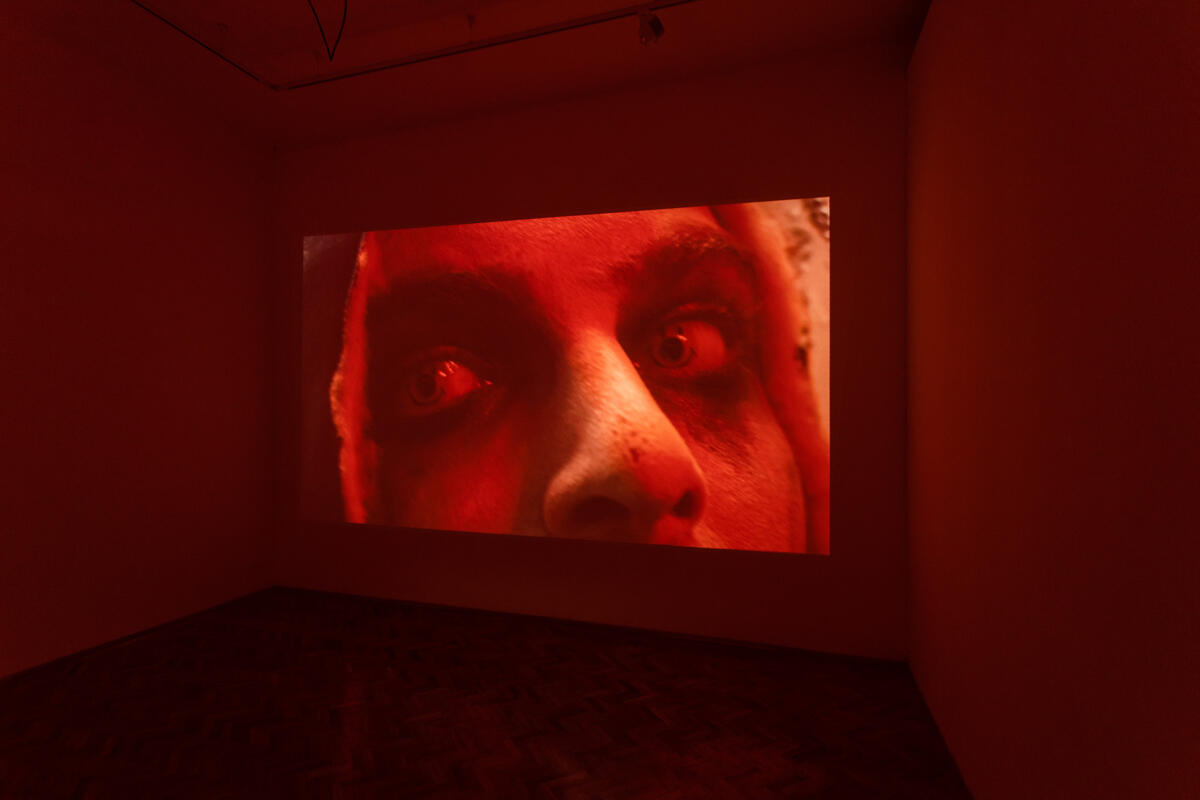
[HU]
Nem tudom, hogy valaha is rendben lesz-e bármi
Radek Brousil filmjének főhőse egy pusztulásra ítélt hal jelmezében járja a várost és a környékét miközben egy női „hyperobject” karakterrel folytat párbeszédet a végről, a szégyenről, a bűnről és a cselekvés lehetőségeiről. Gördeszkázás, cigarettázás és az a bizonyos „pillangók a gyomorban” érzés, amik együttes jelenléte a hosszúra nyújtott, mindvégig távolságtartó felvételekkel és a magával ragadó zenével mintha a 90-es évek független, melankolikus-romantikus kultfilmjeinek világát idéznék meg. Azonban a bensőséges és személyes élmény hitelességét, valódiságát folyamatosan felülírják a túlontúl színpadiasnak ható jelmezek és kellékek, az eltúlzott szerepjáték és a töredezett vágások, az elhangzó banális kinyilatkoztatások és a valódi katasztrófa mindig jelen levő árnyéka. Így a filmben a szándékosan feloldatlanul hagyott ambivalencia, ami a „belső” és a valódi élet közötti viszonyt jellemzi, egy utolsó figyelmeztető felhívásnak értelmezhető. A kiállítótérben megjelenő textil tárgyak és a kimerevített filmkockák fotói tovább fokozzák az aktivizmus és eszképizmus látszólag ellentmondásos viszonyát. A cseh történelem és kultúra kritikus olvasata keveredik a gyerekkor érzelmes és személyes emlékeivel.
A Volt ott egy kórus… című kiállítás egy intenzív és kölcsönös összekapcsolódása a személyesnek és az általánosnak, ahogyan Brousil korábbi munkáiban is az ökológiai tematikát a személyes emlékképekkel vegyítette. Ezek az összefüggések és kölcsönös egymásra vonatkoztatások gyakran szándékosan ellentmondásos érzelmek ütköztetésén keresztül fogalmazódnak meg.
A pusztulásra ítélt hal motívuma, amit a film férfi főhőse személyesít meg, egyfajta alteregó, direkt utalás a globális környezetszennyezés egyik formájára, a csatornahálozaton keresztül a folyókba ömlő mérgező kemikáliák káros hatására.
Ugyanakkor a jelmez eszünkbe juttathatja Brousil korábbi 3D videómunkájának és kerámia plasztikáinak visszatérő groteszk motívumát, a síró vagy éppen fuldokló PET palackokat, amik költői módon utalnak az ipari méretű ivóvíz palackozás értelmetlenségére és katasztrofális ökológiai következményeire.
A film dialógusa különböző 90-es évekbeli indie-emo zenekarok dalszövegeinek részleteiből áll össze. Ezek az együttesek Brousil személyes indentitásának és emlékeinek meghatározó részét képezik, erről tanuskodik a művész 2018-as “Too Proud to Hope, Too Weak to Climb”című, zenekari pólók felhasználásával készült óriási csepp alakú installációja vagy 2019-ből a “Standing, Holding a Waterlily” ölelkező torzói, de többször szolgáltak zenei háttérként más videómunkái során is. A filmben elhangzó párbeszédek során a szerelem, az önbántalmazás, az öngyilkosság, a fájdalom és a szorongás ambivalens módon egy személyes történeten és a bolygó elkerülhetetlen végzetén keresztül tematizálódik. A film egyetlen dalbetétjében maga Brousil énekli, hogy „megpróbálom, megpróbálom, megpróbálom”, amivel még inkább kihangsúlyozza és ráerősít a feszültségre, ami az érvényes egyéni pozíció megőrzésének lehetetlensége, az efölötti szorongás és a hatalomnélküliség állapota között feszül.
A főszereplők arcfestése, az 1920-as és ’30-as évek prágai, avantgárd Szabad Színházának alapítói, Jiří Voskovec és Jan Werich-féle, bohócszerű sminkre utal, amit korabeli ázsiai inspirációkkal is vegyítettek.
Az utópia és a tündérmesék közti feszültség a prágai Szabad Színház poétikus megközelítésében a lokális kontextus és a globális jelenségek közti feszültséget jeleníti meg, amit a film helyszínei tovább fokoznak. Legyen szó a Csehszlovák Huszita Egyház üvegfestett kupolás, funkcionalista templomáról Prága hetedik kerületében, vagy Václav Levý ‘The Devils Heads’ című kőszoborpárosáról (1841-1846) Kokořín közelében, Brousil filmjének helyszínei utalások a cseh romanticizmusra, ugyanakkor a folklór és a tündérmesék világára is. A 90-es évek romantikus, gördeszkás melankóliája emellett visszatérés Brousil gyermekkorába, Prága kertvárosának paneltömbjei közé.
Akárcsak Brousil korábbi munkáiban, saját filmjében is a mindenütt jelenlévő ambivalencia határozza meg a komoly állítások és döntések sorából összeálló történetet. A film forgatása zero-waste/hulladékmentes alapelvek szerint zajlott, a jelmezeket pedig a designer, Mia Jadrná készítette textilmaradékok újrahasznosításával.
Brousil régóta foglalkozik textilekkel és varrással, jó példa erre a cseh textilgyárakban, az afrikai piacra gyártott, speciális afrikai mintájú textilekből készült “Hey Sorrow, How Are You?” (2018) című munkája is. Míg a textileket Brousil általában fotónyomatok alapjának használja, addig a varrást sajátos kapcsolódási pontként az egyéni, fotógráfiára mint médiumra vonatkozó pozíciójával ütközteti, mint férfi fotográfus. A párnaszerű tárgyak, a „puha szobrok” a kiállítótérben konzekvensen mozdítják el a kemény építészeti elemek tematikáját az intimitás ellentétes dimenziójába, az érzelmek egy másik regisztere, a puhaság és az ölelés asszociációi felé. A megdolgozott keretekben a falakon a filmjelenetek állóképei láthatók, s a fényképek során megjelenik Brousil alkotói gyakorlatának múltja és jelene, mint autonóm művész, és mint alkalmazott fotós egyaránt.
A Volt ott egy kórus… a művészi alterego sajátos reprezentációja, egy gondolkodásmód képi megjelenítése, és egyúttal törekvés arra, hogy megragadja az elidegenedés általános és individuális, generációs és társadalmilag meghatározott érzetét.
Imprint
| Artist | Radek Brousil |
| Exhibition | There Was a Choir, There |
| Place / venue | Glassyard Gallery, Budapest, Hungary |
| Dates | 24 November 2020 – 15 January 2021 |
| Website | glassyard.hu |
| Index | Glassyard Gallery Radek Brousil |

